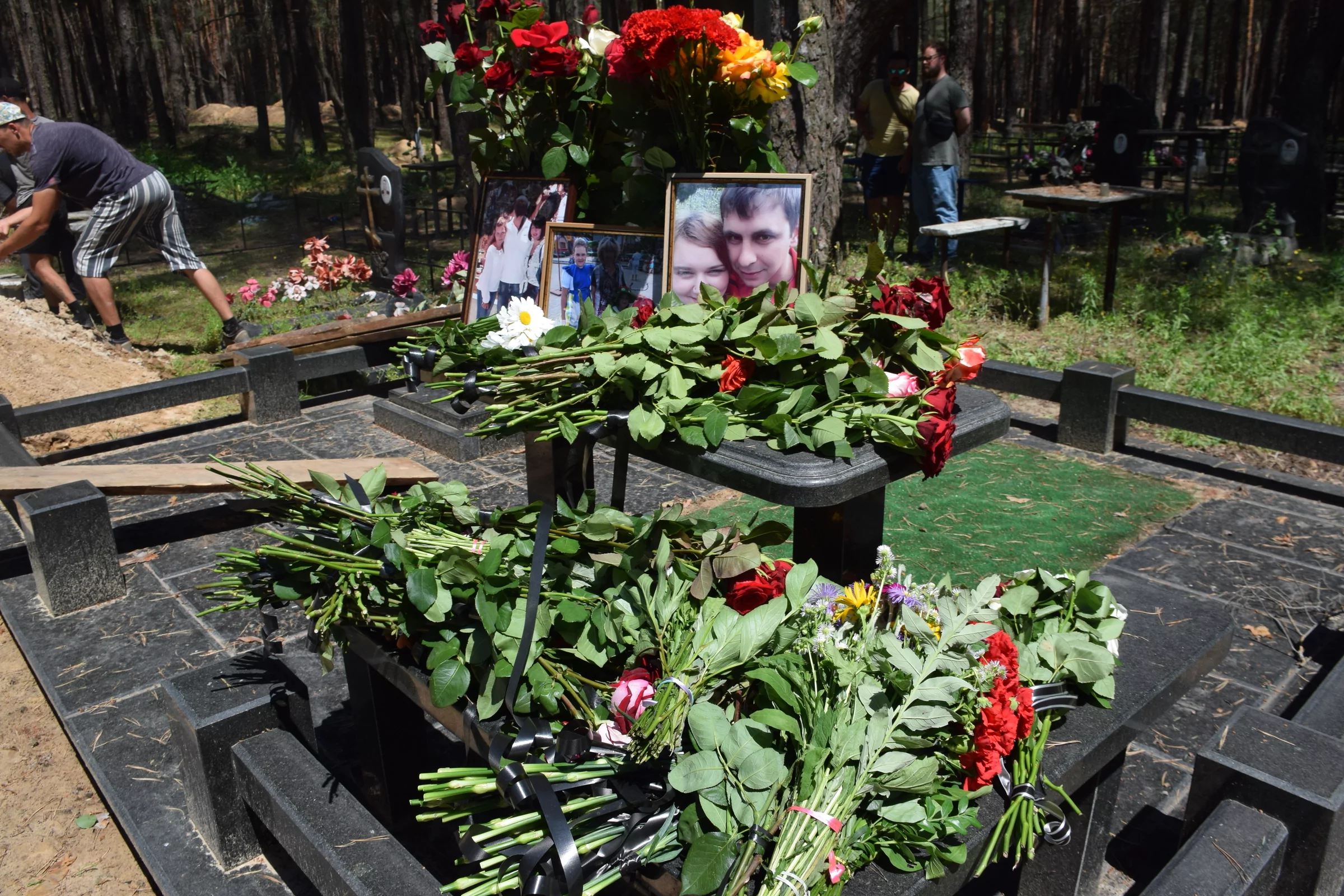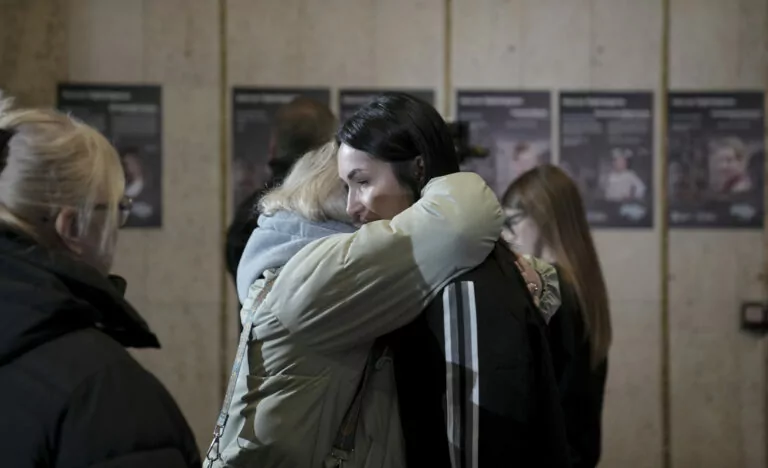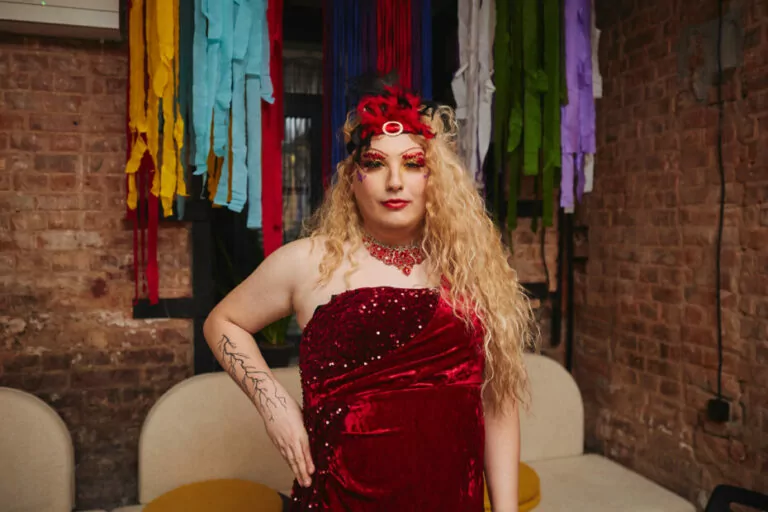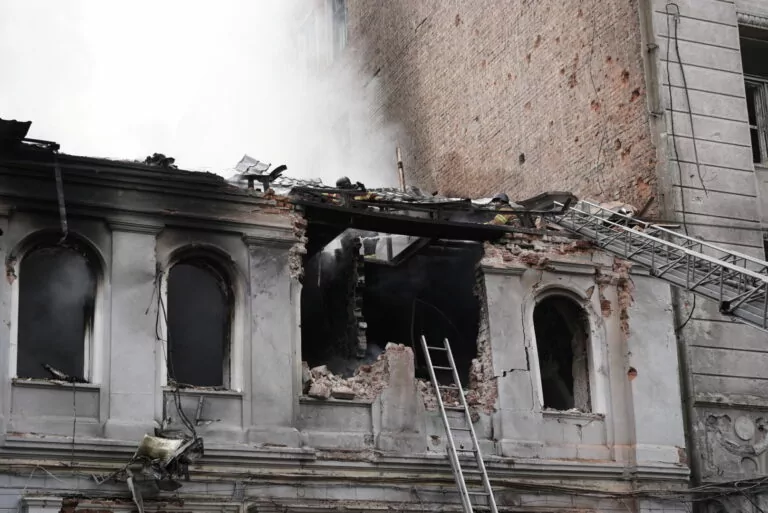Stolpakov and Zhykhariev families were killed by a Russian air attack and buried at Izyum city cemetery.
When the Russian army withdrew from the Kharkiv region, it left mass graves of those who could not survive the occupation. 447 bodies were found in one of them in Izyum after the city was liberated: some were buried in mass graves, and others bore signs of torture. Among those who died as a result of Russian aggression was a family of eight.
On 9 March 2022, the Russians destroyed a house where civilians hid in the basement. At least 50 people died under the ruins.

During the occupation, the Russian military did not allow anyone to approach the ruins of the house. Halyna Zhykharieva came to 2 Pershotravneva Street every day for a month and a half to find her family.
In early April 2022, the locals began to dismantle the rubble with the help of simple equipment and utilities. Then the bodies of eight of her family members were pulled out from the ruins. They were hard to recognize: they were so severely charred.
The five-story building on Pershotravneva Street was home to four generations of the family – 49-year-old son Alexander Zhykharieva, his 69-year-old mother-in-law Lyudmila Sokol, 49-year-old wife Tatiana, their 31-year-old daughter Olena Stolpakova and her 33-year-old husband Dmytro Stolpakov with their two children, 5-year-old Olesya and 8-year-old Alexandra, and their second daughter, 13-year-old Maria Zhykharieva.
The true scale of the tragedy became known a bit later when it was discovered that six people were buried in graves with crosses and plaques. However, Halyna could not identify two people – her granddaughter Maria and daughter-in-law Tatiana – Their mutilated bodies were the last to be retrieved, so they were initially buried in unmarked graves with numbers.
Halyna Zhykharieva submitted her DNA for an examination, so investigators could identify all family members when they exhumed them at this cemetery, as did relatives of other victims buried in the forest on the outskirts of Izium.
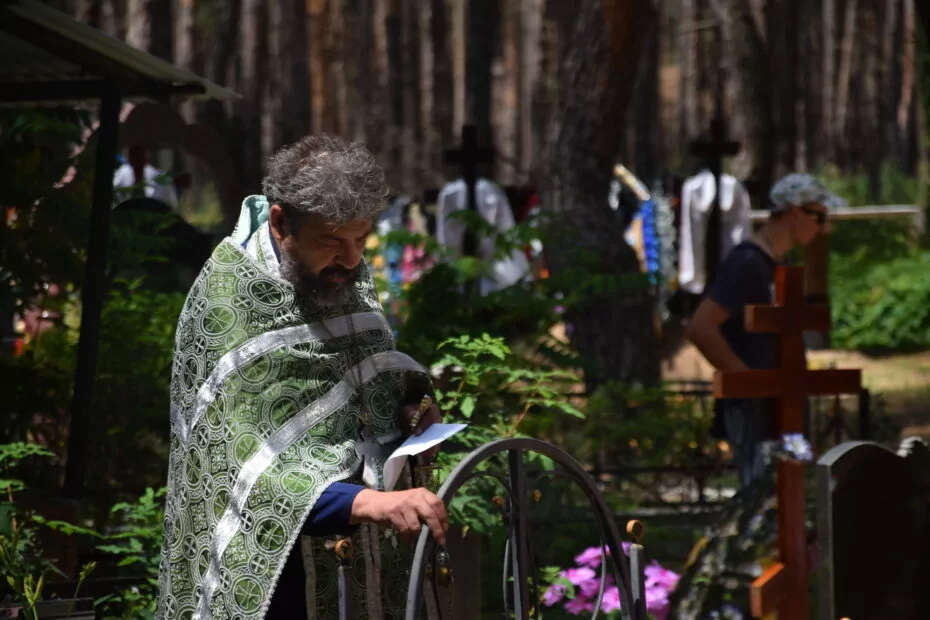


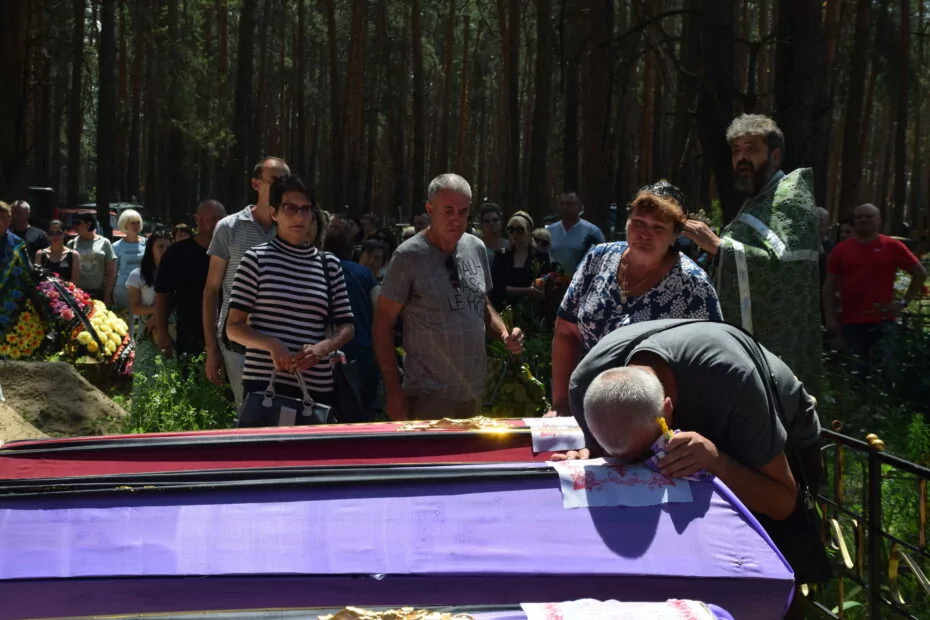



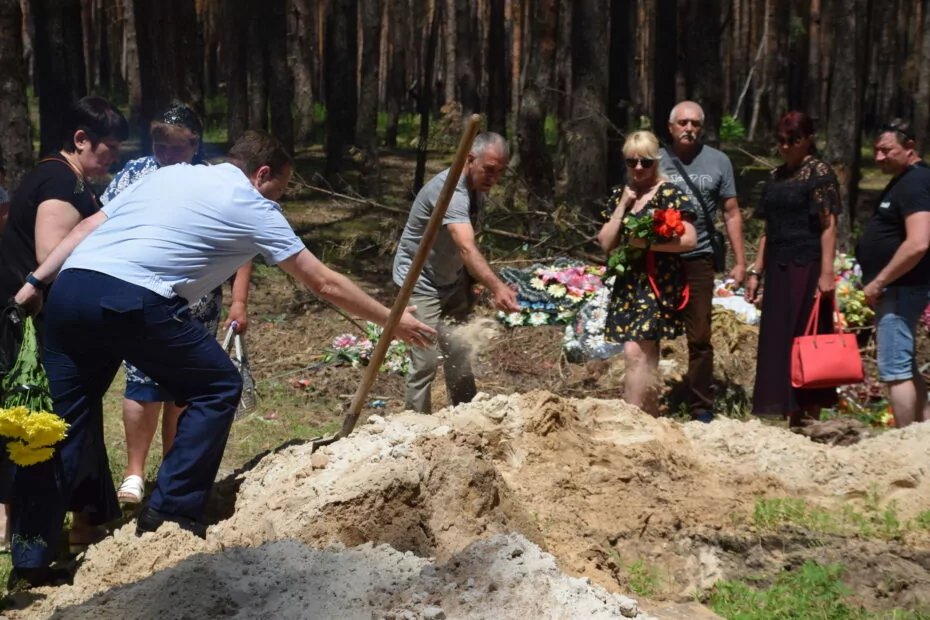
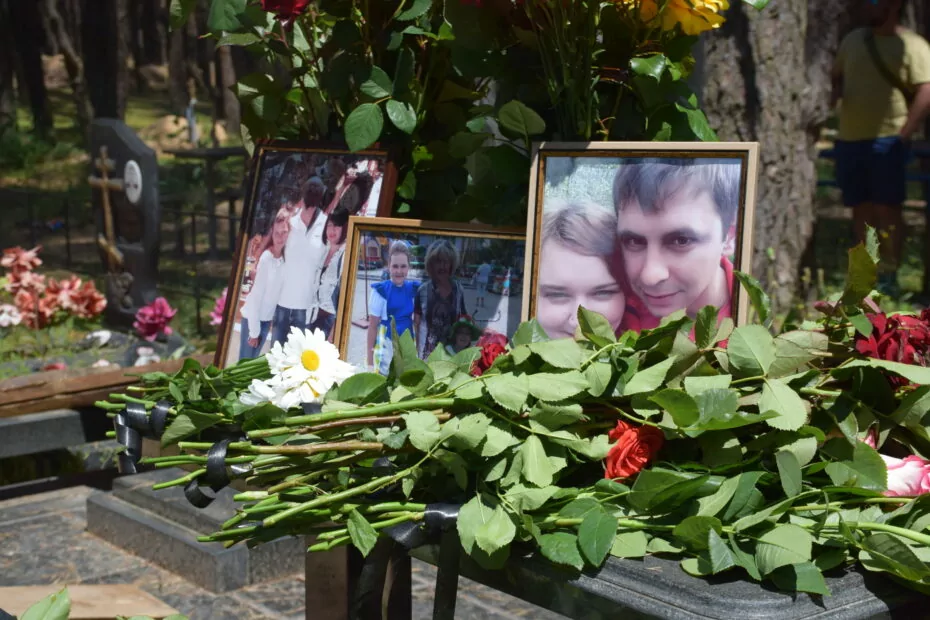
Five-storey building on Pershotravneva Street
The house at 2 Pershotravneva Street has become a symbol of the horrors left behind by Russia in Izium. After the shelling, the two middle blocks of this five-storey building are missing. There are none at all. Emptiness instead of 40 apartments.
Izyum has been shelled intensively since the beginning of the full-scale invasion. On the night of 24 February, there was the first hit near 2 Pershotravneva Street. On 24 February and in the following days, massive shelling began: mortar, artillery, aircraft and helicopter attacks.
The locals can only guess why the house was shelled so intensively. The house is on the outskirts of the city, and the Russians were shelling Izyum right through it.
On 9 March, after the sixth or seventh hit, the house at 2 Pershotravneva Street collapsed. The second and third porches were folded like a house of cards. Many people lost their chances of survival in the fire, which burned for almost 10 hours because of the phosphorus shells.
It was under the second and third entrances that collapsed that the warmest basement was located. Most people went down there. On the day of the tragedy, people from the street also ran in to escape the shelling.
The people who died in this house stayed under the rubble for a month. Only then did the occupiers allow us to start clearing the ruins.
For most of the people who died in this house, DNA testing is the only way to identify them. Some were identified by the data in their phones, by jewellery or, if it was possible to see them, by their clothes. Thanks to these features, some graves in the Izium forest were given not only numbers but also surnames.
Izium mass grave
Ukrainian President Volodymyr Zelenskyy drew a parallel between the discovery in Izium and the tragic Bucha massacre, initiating forensic investigations. The individuals involved in the investigation have been profoundly affected by the process and overwhelmed by emotions. One of them expressed concerns to reporters, stating that they may require mental health support in the future, as the haunting nature of the work will forever linger in their minds.
In response, Russia launched a large-scale disinformation campaign on social media platforms with the intention of discrediting the findings. They labelled them as a “Western fabrication” or propagated the false narrative that the deceased individuals were Ukrainian soldiers. When questioned by journalists regarding Zelenskyy’s assertions, Kremlin spokesman Dmitry Peskov dismissed both the Izium and Bucha massacres as falsehoods.
The mass grave is one of the largest in a single liberated town, with more than 440 graves. All the bodies were exhumed and sent for forensic examination. A total of 447 bodies were discovered, including 215 women, 194 men, five children, and 22 servicemen. In addition, the remains of 11 people whose gender could not be determined were found.
Modern DNA laboratories were operating in the city, significantly accelerating the identification of exhumed bodies. The mobile lab is still helping to collect additional samples.
See also
- Izium mass grave: 66 bodies still unidentified. The identification of all the bodies found in the mass grave near Izium in Kharkiv region on September 15, 2022, after the liberation of most of the region from Russian forces, has not yet been completed.
- He lost his legs in the war for Ukraine but not willing to live. The story of a soldier who suffered the loss of his legs during a full-scale invasion, and continues to live, dream and think about his brewery.
- One year in captivity: Kyiv holds a rally to commemorate the release of defenders from Azovstal. The defenders of Mariupol who left Azovstal have been in Russian captivity for a year now, where they faced only torture, abuse and death.
